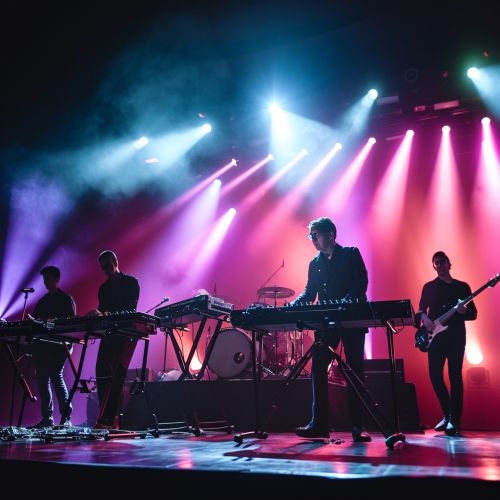New Wave Music
Origins and Characteristics
New wave music is a genre that emerged in the mid to late 1970s alongside punk rock. It incorporated elements of punk's rebellious energy with pop music's catchy melodies and danceable rhythms. The term "new wave" was initially used interchangeably with "punk," but as the punk movement began to fade, new wave began to stand on its own, incorporating a wider range of influences and styles.
New wave music is characterized by its stylistic diversity, which can range from simple pop-oriented tunes to complex, experimental compositions. It often features synthesizers and electronic production, a departure from the raw, guitar-driven sound of punk rock. Lyrics in new wave songs are typically introspective and emotionally complex, often dealing with themes of love, alienation, and societal issues.


Influences and Evolution
New wave music was heavily influenced by a variety of musical genres and movements. The punk rock movement of the 1970s, with its emphasis on DIY ethos and anti-establishment attitudes, played a significant role in the development of new wave. Other influences include the glam rock and art rock movements, which contributed to new wave's theatricality and artistic ambition.
Over time, new wave evolved and splintered into a variety of sub-genres, including synth-pop, gothic rock, and post-punk. These sub-genres took the basic elements of new wave and expanded upon them, incorporating influences from other genres and exploring new musical territories.
Impact and Legacy
New wave music had a significant impact on the music industry and popular culture. It helped to usher in the era of music videos, with many new wave artists producing innovative and visually striking videos that were played on music television channels like MTV. New wave also influenced the development of other musical genres, including alternative rock and indie pop.
The legacy of new wave music continues to be felt today, with many contemporary artists citing new wave bands as major influences. The genre's emphasis on innovation and artistic expression has also had a lasting impact on the music industry, encouraging artists to push boundaries and experiment with new sounds and styles.
Notable Artists and Works
There are many notable artists and works within the new wave genre. Bands such as Talking Heads, Blondie, and The Cars are often cited as key figures in the development of new wave. Their innovative use of synthesizers, combined with their knack for crafting catchy pop melodies, helped to define the sound of the genre.
In terms of individual works, albums like Talking Heads' "Remain in Light," Blondie's "Parallel Lines," and The Cars' "The Cars" are often cited as seminal new wave albums. These albums showcase the genre's diverse range of influences and its ability to blend pop sensibilities with more experimental elements.
